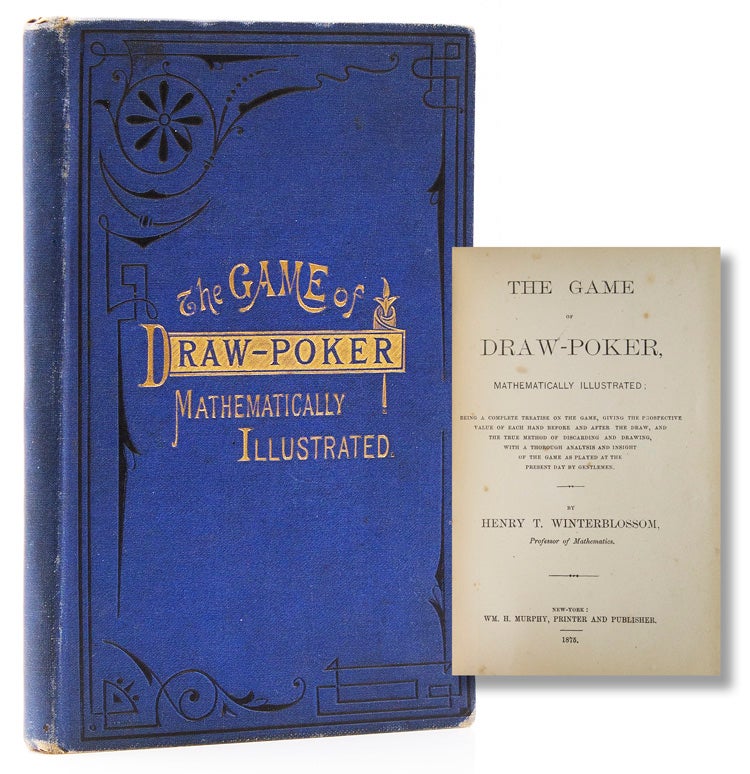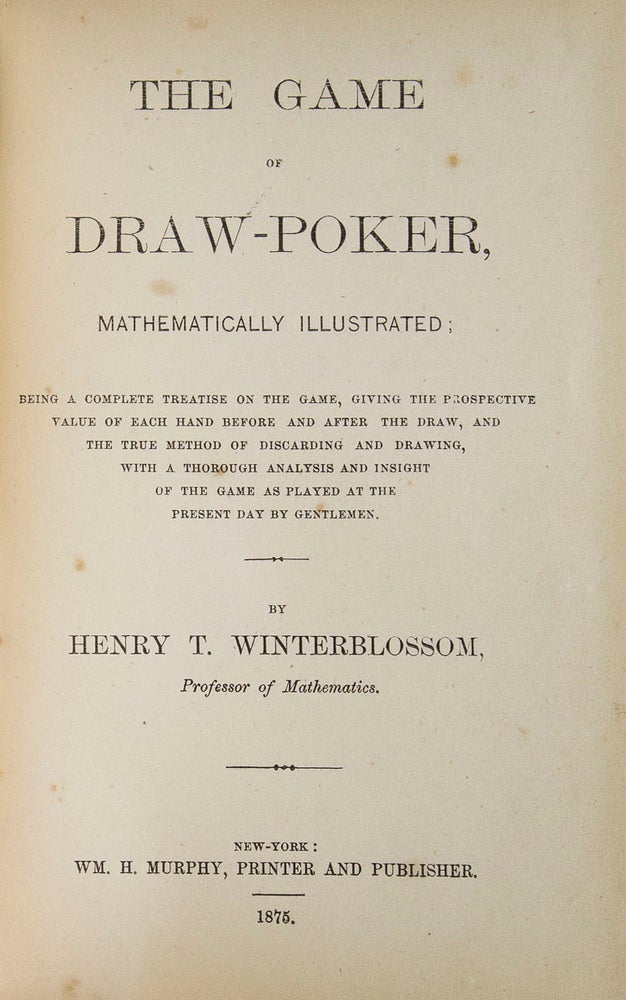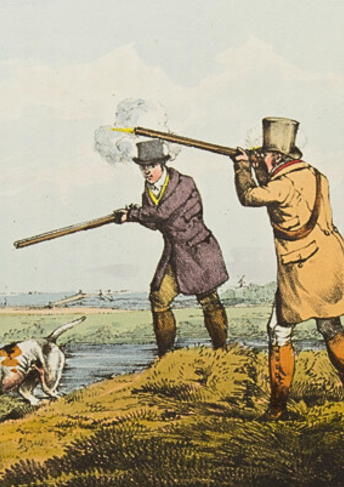The Earliest Book on the Mathematics of Poker
The Game of Draw-Poker, Mathematically Illustrated; Being a Complete Treatise on the Game, Giving the Prospective Value of Each Hand Before and After the Draw, and the True Method of Discarding and Drawing, With a Thorough Analysis and Insight of the Game as Played at the Present Day by Gentlemen.
New York: William H. Murphy, 1875.
Price: $2,500.00
About the item
First edition. viii, [9]-72 pp. 1 vols. 12mo. The Earliest Book on the Mathematics of Poker. Publisher's blue cloth, front cover stamped in gilt and black. Spine ends rubbed, light soiling to cover and spotting to text, but in all an attractive copy. Jessel 1706.
Item #315094
First edition of this important early mathematical approach to poker; along with Blackbridge's The Complete Poker Player (1875), it is the earliest book devoted soley to the game. The author, Henry T. Winterblossom, advertises himself as a Professor of Mathematics, and his book is the first to treat the mathematical aspects of poker. Winterblossom argues that knowing the odds and probabilites of success with each hand mitigates the risk inherent in gambling and reduces the player's reliance on dumb luck: "All games of chance create a morbid appetite in those who indulge in them, in proportion to their ignorance of the mathematical basis upon which those games are constructed."
"The National Game," a New York Times article for February 12, 1875, suggests that Winterblossom is a pseudonym, and though the author's real name is not revealed, he was thought to be a member of New York's literary Lotus Club.
The earliest contemporary notice of Blackbridge's Complete Poker Player, considered with Winterblossom the first books on the sport, was a review in the 10 April 1875 edition of the New York Times — evidence, perhaps, that Winterblossom's work has precedence as the first book on poker.





